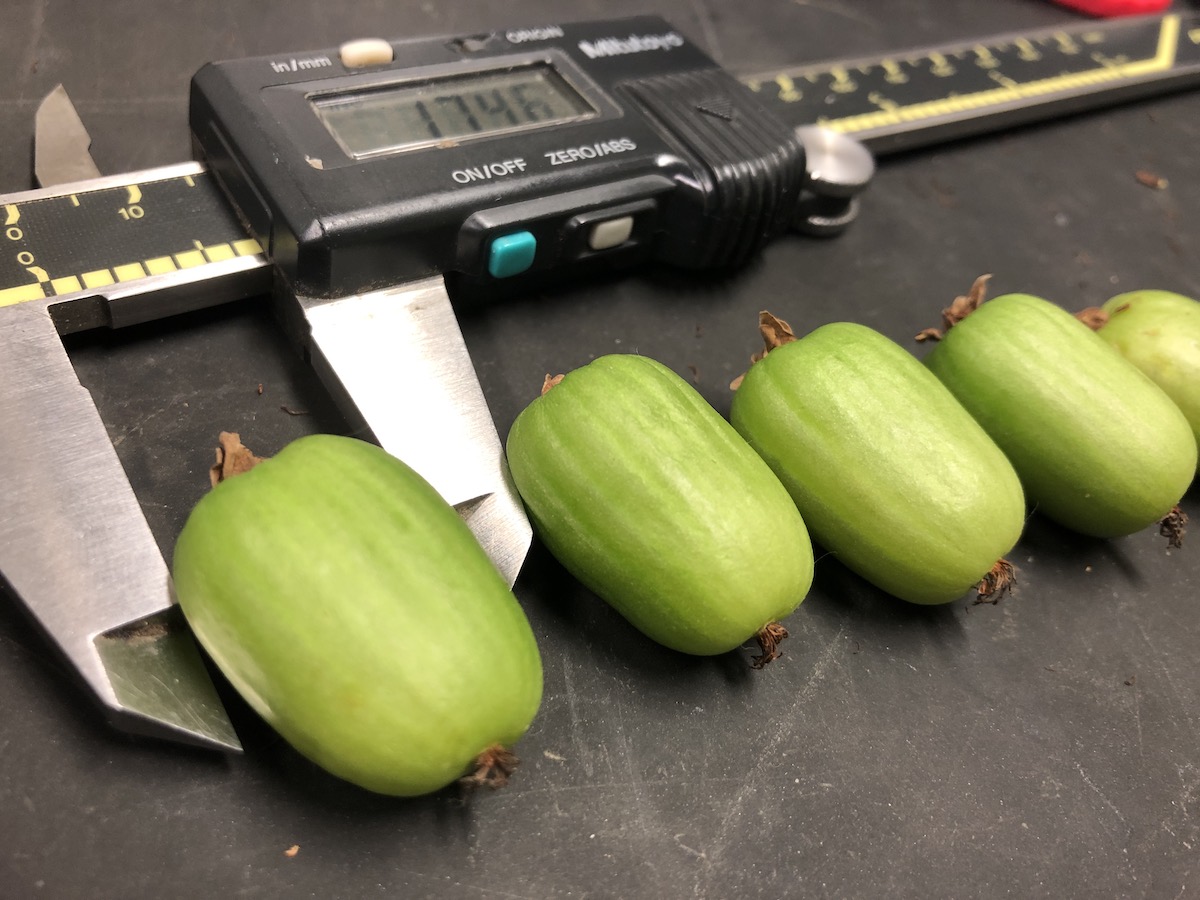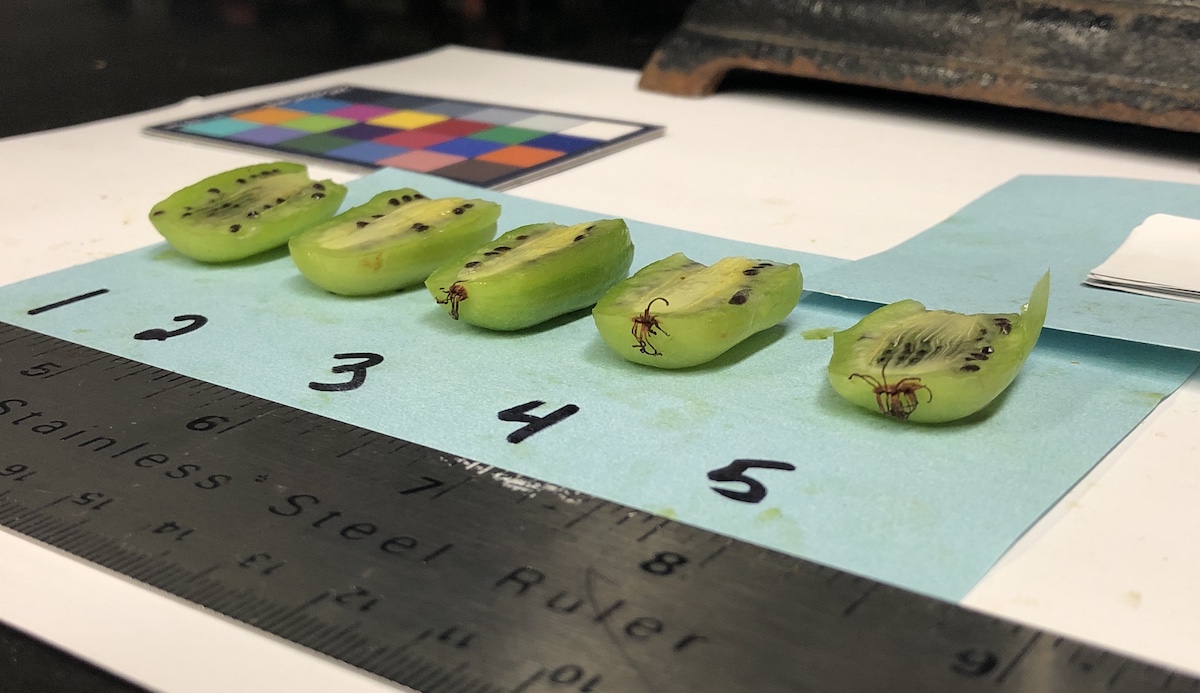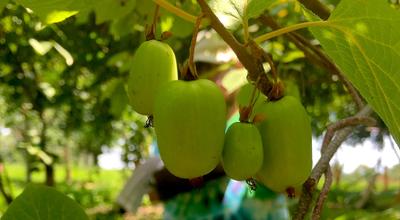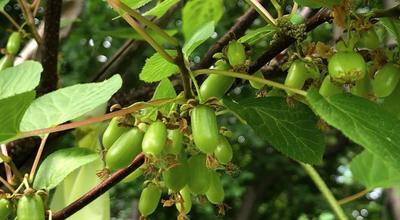Imagine you are walking through an orchard with a hundred different apple varieties. It is your job to go through the orchard and determine the best apple. You might start off by looking around and asking yourself, which ones look visually appealing? Are there any that have a larger or smaller size than the others? Are there any colors that draw you in?
Once you have chosen the fruits that look best to you, you line them up and take a bite out of each one. What kinds of characteristics are you experiencing while you try each one? Are you focusing on the texture and whether or not it has a crisp crunch? Are you thinking about the tartness or sweetness of the fruit? What flavors are you tasting?
All of these are the questions that go into cultivating new varieties of fruits for the marketplace because these are all questions that people consciously or unconsciously ask themselves when buying and eating fruit. This is why having information about these qualities for a new specialty crop can inform commercial growers further about which varieties to consider growing.
These are the basic fruit qualities that are most often considered:
- size
- weight
- sugar content
- acidity
- firmness
- shelf life
We have measured these fruit qualities for a number of kiwiberry varieties grown here in Minnesota. How are they measured? Let’s take a look...
Fruit size and firmness

To begin, we harvest kiwiberries multiple times throughout the harvest season. We have to pick enough fruit to have at least five berries for sampling at each post-harvest week, which means every week until fruit go bad (approximately 6 weeks on average). We weigh the berries and measure them with calipers.
Next, we measure berry firmness in two ways. First, we perform a human perception test by visually assessing the fruit and squeezing it between the thumb and forefinger, and rating it on a scale of 1-5: 1 being firm with no transparency and 5 being overly soft with 75%+ transparency (transparency is one of the indicators of ripeness). Second, we test the fruit with a digital penetrometer which probes the fruit and measures the amount of force needed to puncture it.
Sugar, acid, and chemistry

Measuring sugar content, acidity, and other chemistry for the fruit requires more destructive measures. To begin this process, the fruits are sliced in half. One half is blended and filtered to collect the juice, and the other half is dried and ground for other tests. Then we begin with multiple tests using the juice:
- We determine sugar content by placing juice on a refractometer to measure soluble solids content (SSC) in °Brix.
- We measure pH by probing the juice with a pH meter.
- We measure the concentration of acid in the juice as total titratable acidity (TTA). Juice is distributed onto an automatic titrator that measures the amount of a known base solution to neutralize all the acids in the juice sample.
For fruits in the family Actinidia (kiwifruit), the average °Brix is between 12-18°Brix (Debersaques et al., 2014; Fisk et al., 2006) with consumer satisfaction usually being reached around 12-13°Brix (Arazuri, Jaren, and Arana, 2005; Harker et al., 2009). Total titratable acidity (TTA) in kiwifruits typically falls between 0.6 and 2.0 (Marsh et al., 2004; 2011). These values are important because the interaction between levels of sugar and acid can impact how sweet the fruit is perceived when eaten (Rossiter et al., 2000). This means that if a fruit has high acid and high sugar, it might taste pleasantly sweet. However, if it has high acid and low sugar, then the fruit might taste sour.
In addition to the basic fruit quality metrics, we also measure the relative amounts of oxalates in the varieties. Oxalate, or oxalic acid, is a weak acid that can bind to calcium in fruit to form small structures that irritate the mouth, or in the body to form kidney stones. Typical soluble oxalate amounts in fruits range from 1.1mg/100g in apple to 6.5mg/100g in kiwifruit (Al-Wahsh et al., 2012).
- We measure oxalate using dried, powdered kiwiberry tissue and a reaction that changes color with the amount of oxalate present.
- A deeper color change means a greater amount of oxalate.
- Learn more about kiwiberry chemistry here.

Fruit quality of kiwiberry varieties in Minnesota
Below you will find a table with fruit quality data for ten varieties that were grown at the Horticultural Research Center in Victoria, MN. The values for this table are the averages for all fruits of each variety over the 2019 and 2020 harvest seasons that would be considered at an appropriate ripeness/firmness for immediate eating. This means they would have softened and undergone a color change indicating readiness for enjoying.
As you can see the A. kolomikta tended to be smaller fruit both in size and weight, while also having a lower overall measured acidity and sugar content. However, the sugar to acid ratio still indicates that the A. kolomikta fruits would have a pleasant sweetness.
Interestingly, the A. kolomikta tended to have higher concentrations of oxalates in the fruit which means some people might notice a catch, or irritation, at the back of their mouth after eating them. The A. arguta varieties tended to have larger fruit with higher acid and sugar content, and lower oxalate content.
For the most part, all of these metrics show that the fruits are falling in expected and enjoyable ranges. From personal experience, all of these varieties are worthy of a taste!
Fruit traits of kiwiberry grown at the UMN Horticultural Research Center, Victoria, MN
References
Arazuri, S., C. Jarén, and J.I. Arana. 2005. Selection of the temperature in the sugar content determination of kiwi fruit. Int. J. Infrared Millimeter Waves. 26:607-616.
Al-Wahsh, I.A., Y. Wu, M. Liebman, M. 2012. A comparison of two extraction methods for food oxalate assessment. J. Food Res. 1:233-239.
Debersaques, F., O. Mekers, J. Decorte, M.C. Van Labeke, K. Schoedl-Hummel, and P. Latocha. 2014. Challenges faced by commercial kiwiberry (Actinidia arguta Planch.) Production. ActaHort. 1096: 435-442.
Fisk, C. L., M.R. McDaniel, B.C. Strik, and Y. Zhao. 2006. Physicochemical, sensory, and nutritive qualities of hardy kiwifruit (Actinidia arguta ‘Ananasnaya’) as affected by harvest maturity and storage. J. Food Sci. 71:S204-S210.
Harker, F. R., B.T. Carr, M. Lenjo, E.A. MacRae, W.V. Wismer, K.B. Marsh, and R.B. Pereira. 2009. Consumer liking for kiwifruit flavour: A meta-analysis of five studies on fruit quality. Food Quality and Pref. 20:30-41.
Marsh, K., S. Attanayake, S. Walker, A. Gunson, H. Boldingh, and E. MacRae. 2004. Acidity and taste in kiwifruit. Postharvest Bio. Tech. 32:159-168.
Marsh, K. B., M. Sullivan, and T.G. Thorp. 2011. Titratable acidity in kiwifruit, a comparison of different methods of analysis. ActaHort. 913:657-660.
Rossiter, K.L., H. Young, S.B. Walker, M. Miller, and D.M. Dawson. 2000. The effects of sugars and acids on consumer acceptability of kiwifruit. J. Sensory Studies. 15:241-250.
Acknowledgements
This research is funded by the Minnesota Department of Agriculture and made possible through the University of Minnesota Department of Horticultural Science.
Thank you to all the following people for their contributions to this article:
- Dr. James Luby, Professor, Department of Horticultural Science, University of Minnesota
- Dr. Robert Guthrie, Volunteer Actinidia curator, University of Minnesota
- Emily Tepe, Research associate, Department of Horticultural Science, University of Minnesota
- Carrie Brevitz, Research associate, Department of Horticultural Science, University of Minnesota
Banner image by Seth Wannemuehler.
Any mention of or links to commercial products is for educational purposes only and does not imply endorsement by the authors, the University of Minnesota, nor any other organization supporting this research.



